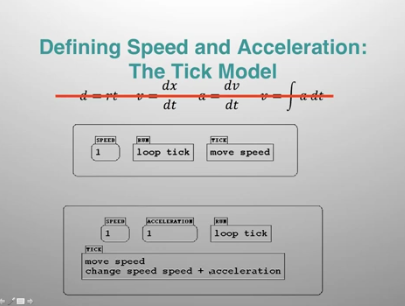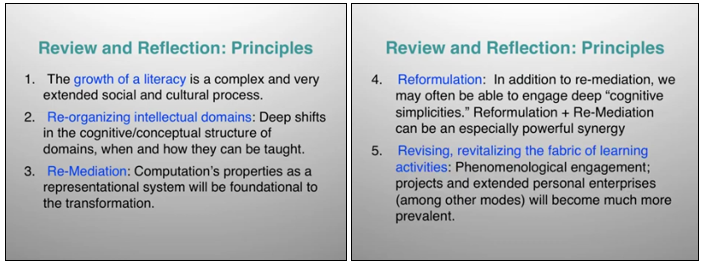By Steven Floyd and Lisa Anne Floyd

On May 22nd, 2019 we had the pleasure of facilitating a Math Knowledge Network webinar with Corey Professor of Education, Andy diSessa of UC Berkley’s Graduate School of Education. Dr. diSessa has been researching and writing about computers and education since graduating with a PhD in Physics from MIT in May, 1975. His book, Changing Minds: Computers, Learning, and Literacy (2000) presents a picture of how the computer can move beyond acting as a simple tool to facilitate learning and instruction, and serve as a catalyst for change and the basis of a new form of literacy.
During the webinar, Dr. diSessa presented his view of Computational Literacy and the big picture of computers in education. He drew on historical examples of how algebra served a new form of literacy with new representational systems that made complex ideas, such as those expressed in Galileo’s Dialogues Concerning Two New Sciences (1638), accessible to all.

In much the same way, Dr. diSessa sees computing as a new form of mass literacy. He introduced and expanded upon five main principles of computational literacies:
- the development of a literacy is a very complex and extended social and cultural process;
- a literacy fundamentally alters the intellectual structures of domains;
- re-mediation is a primary mode of change;
- reformulation can take place which involves redesigning knowledge based on cognitive simplicities; and
- revitalizing the ecology of learning activities for substance and engagement.
Dr. diSessa provided examples of these principles in practice by taking us through activities involving the learning of motion, kinematics and vectors with sixth graders. Although these are concepts that are typically reserved for high school students, he showed us how the understanding of these ideas can not only be enhanced through computational literacy, but can be fun and engaging for younger learners. Dr. diSessa also provided a critique of competing approaches to computers in education, including Computational Thinking, and warned that some of these approaches result in merely “following our nose”.
Dr. diSessa concluded the webinar by reminding us that Computational Literacy “represents a powerful take on the big picture of computation’s potential effects on education, which has both scientific and practical advantages over other views”. He encouraged educators to engage in activities with students that have true cumulative power and to ensure that we carefully monitor our accomplishments in the area of computers and education and filter out noise and distractions from the big picture.

This webinar with Dr. diSessa was supported by the Math Knowledge Network, which is a part of the Knowledge Network for Applied Education Research (KNAER) whose funding comes from the Ontario Ministry of Education.
To learn more about Dr. diSessa’s Computational Literacy, you can read his article Computational Literacy and “The Big Picture” Concerning Computers in Mathematics Education (2018) published by the Journal of Mathematical Thinking and Learning. A full recording of the webinar is available on the Math Knowledge Network website.
